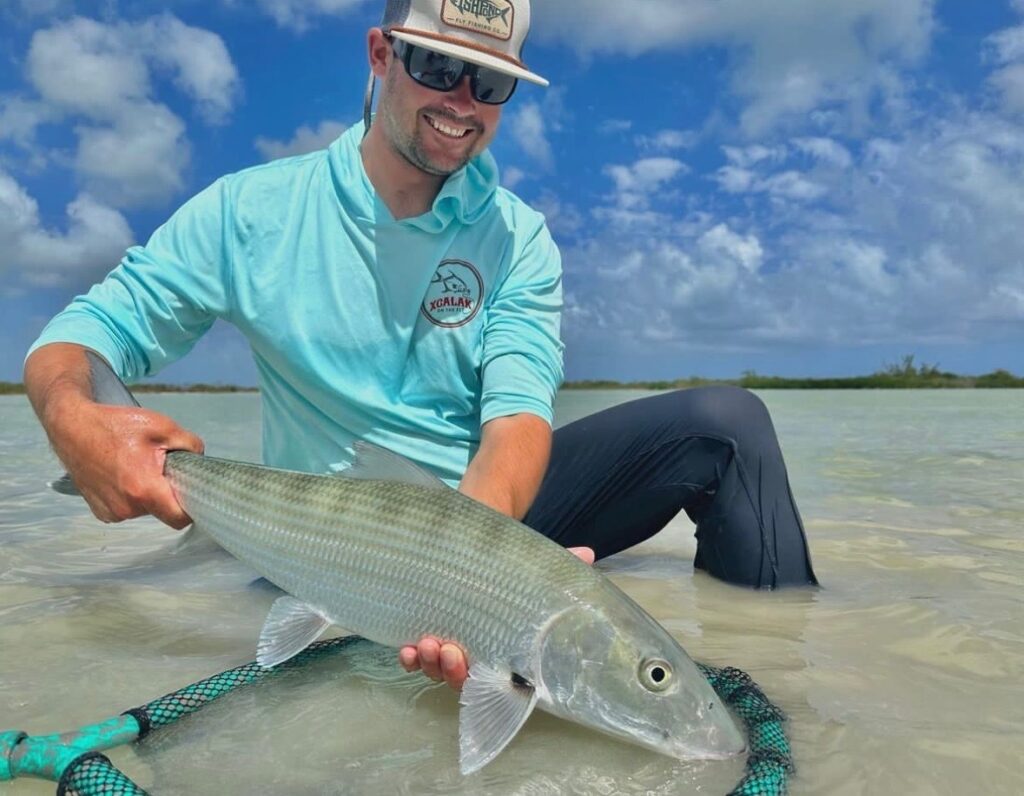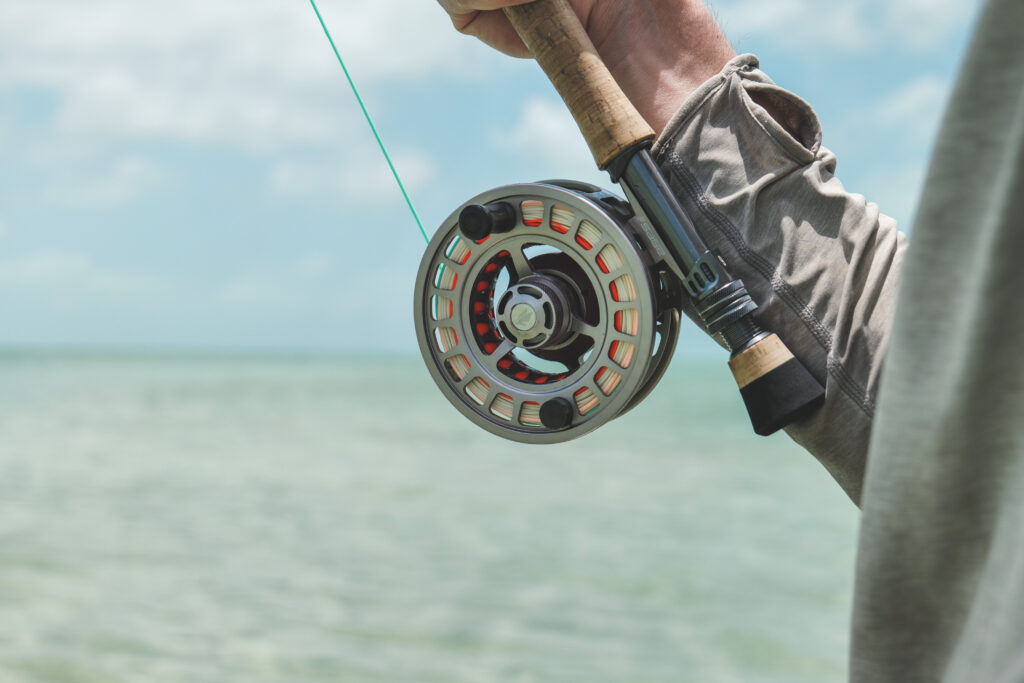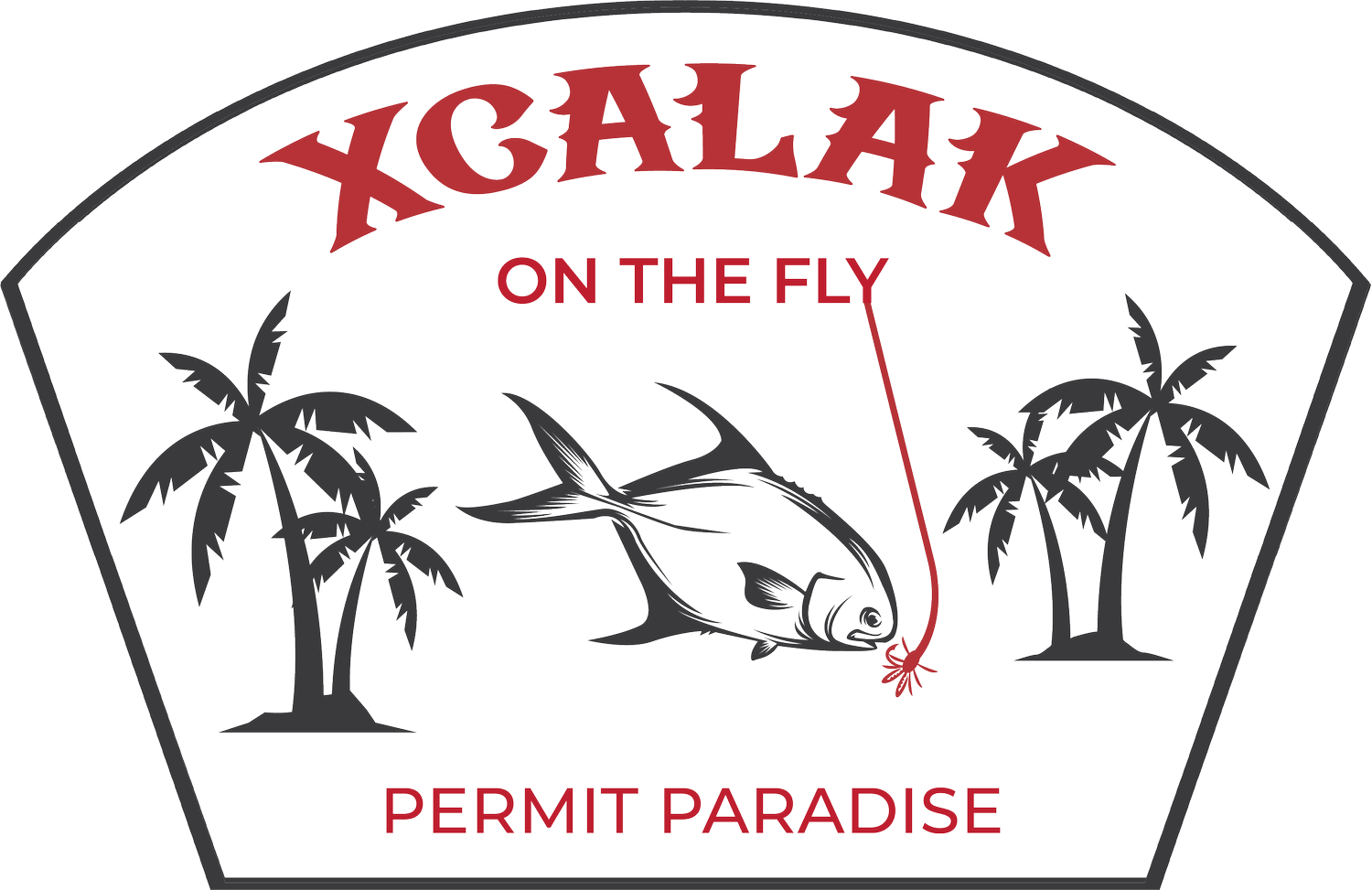
One of the three parts of the Grand Slam, The Bonefish, is a trademark of the Tropic Waters. Luckily, they are plentiful here in our home, Waters at Xcalak. Hopping on a plane and taking the flight down to our little paradise, I cast a line at one of these guys, often the trip’s highlight. But to help you be a better angler, it’s really helpful to understand a little bit about the fish, its life, and how it operates, so let’s break it down.
Lifecycle of Bonefish
Bonefish undergo several developmental stages, each influenced by environmental conditions and seasonal changes.
Spawning and Early Development (Spring-Summer)
Bonefish typically spawn offshore in deep water, often near reef drop-offs, during late spring and summer. Spawning events are linked to lunar cycles, with peak activity around the full and new moons. Fertilized eggs hatch into leptocephalus larvae, which are transparent and ribbon-like and drift with ocean currents for several weeks before settling in coastal habitats.
Juvenile Growth and Inshore Transition (Late Summer – Fall)
Once larvae metamorphose into juvenile Bonefish, they seek out sheltered coastal areas such as seagrass beds, mangroves, and shallow lagoons. These habitats protect from predators and abundant food sources like small crustaceans and worms. Juvenile Bonefish remain in these nurseries until they reach a size suitable for venturing onto the open flats.
Adult Stage and Feeding Behavior (Year-Round)
As Bonefish mature, they migrate to the shallow sand and mud flats where they spend most of their lives. They are opportunistic feeders, using their sensitive snouts to detect crabs, shrimp, mollusks, and small fish buried in the substrate. Tides influence their feeding behavior, and they often forage more actively during incoming and outgoing tides when food is most abundant.

Seasonal Bonefish Migration Patterns
While Bonefish are primarily resident fish that do not undertake long-distance migrations, they exhibit seasonal and tidal movements that impact their location and feeding habits.
Winter (December – February)
Bonefish seek out slightly deeper waters during the cooler months, particularly during cold fronts. However, on warm, sunny days, they return to the shallow flats to feed, making midday the best time for anglers to target them.
Spring (March-May)
As water temperatures rise, bonefish become more active and widespread across the flats. This is also the peak spawning season, and anglers often find larger schools of fish preparing for offshore migrations to their spawning sites.
Summer (June – August)
Bonefish spread across the flats during the warmest months, taking advantage of abundant food sources. Early morning and late afternoon provide the best fishing opportunities, as midday heat can push fish into slightly deeper channels.
Fall (September – November)
As temperatures cool, bonefish remain highly active on the flats, feeding aggressively before winter. Juvenile Bonefish also start transitioning into adult habitats, increasing the number of fish available to anglers.
Why Xcalak is a Premier Bonefish Destination
With the pristine tropical waters surrounding our little getaway, you can access some of the best bonefishing in the world. From the flats to the mangroves and the coral reefs that provide the necessary environment, it’s like our area was built with the Bonefish in mind as the perfect environment for them to inhabit year-round. Our guides know what to do to help get you on the spot to take advantage of each different part of the year so you can Notch one fish off the Grand Slam and, who knows, maybe take a shot at the full thing. Have you wanted to hop on a plane any time of the year and come down here to fish for Bonefish? Just drop us a message, and we’ll be glad to help you book your trip.
